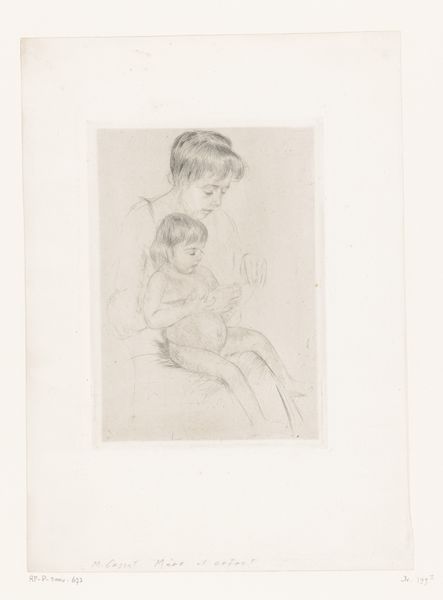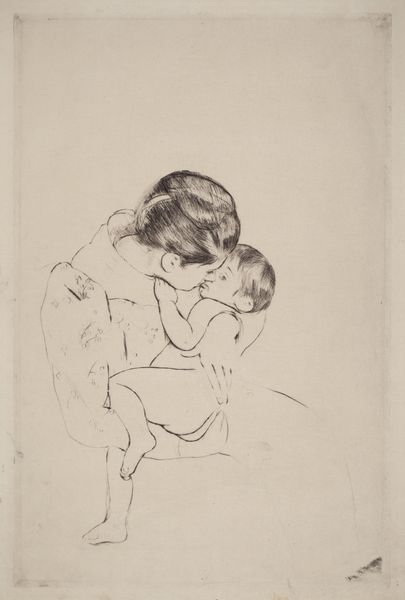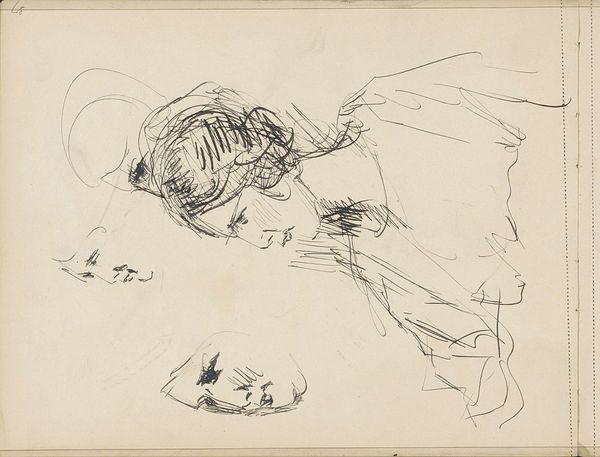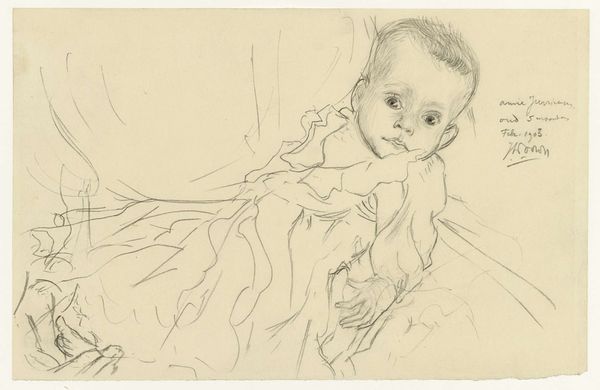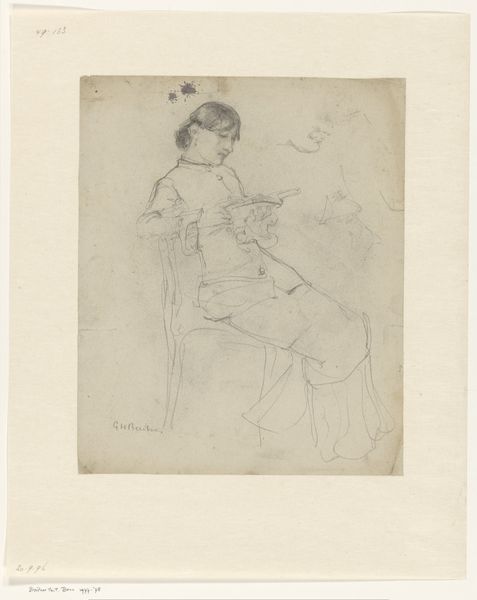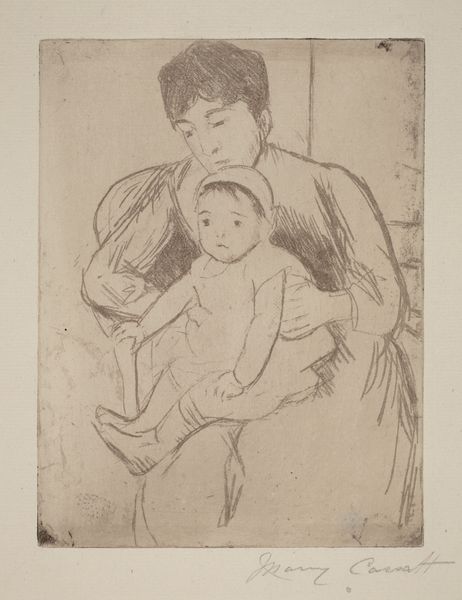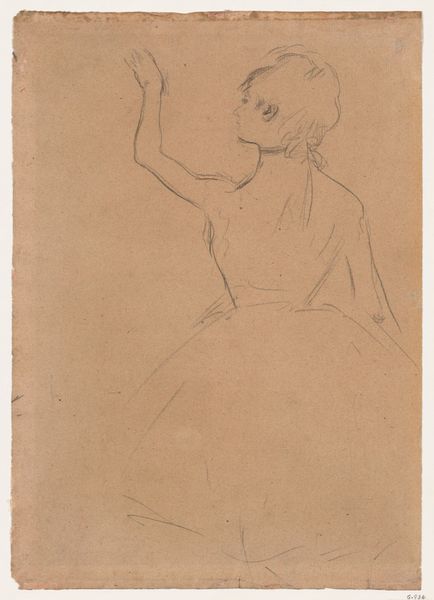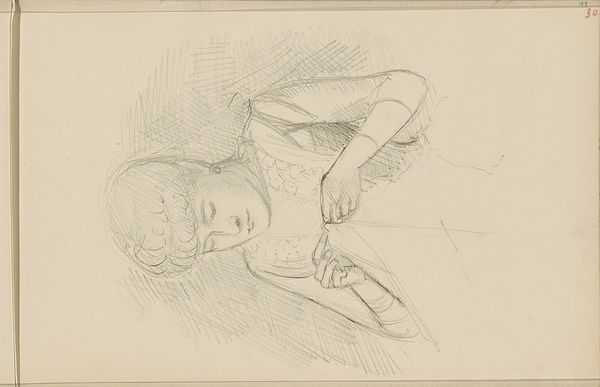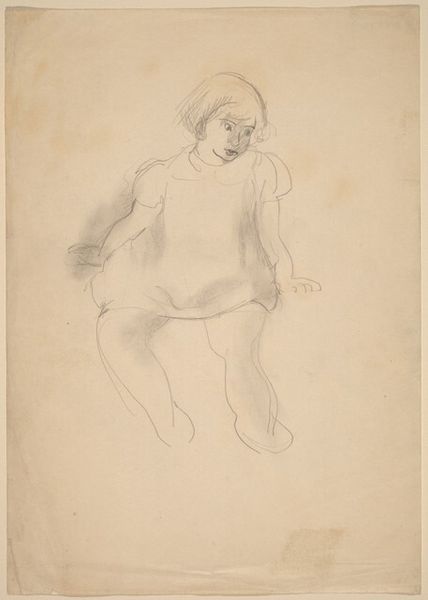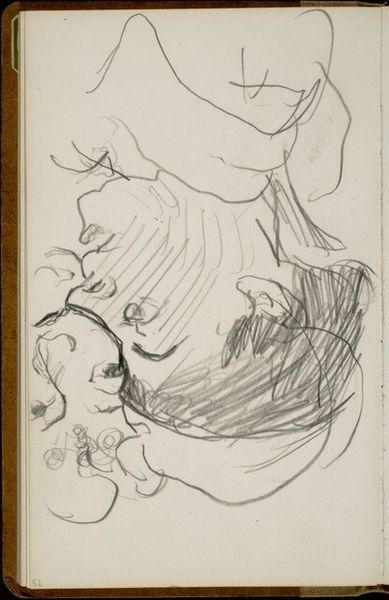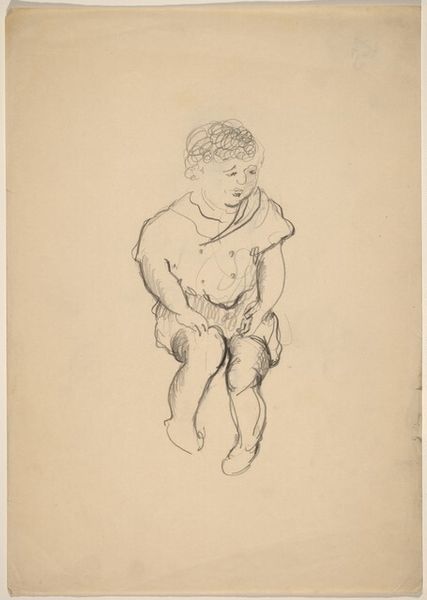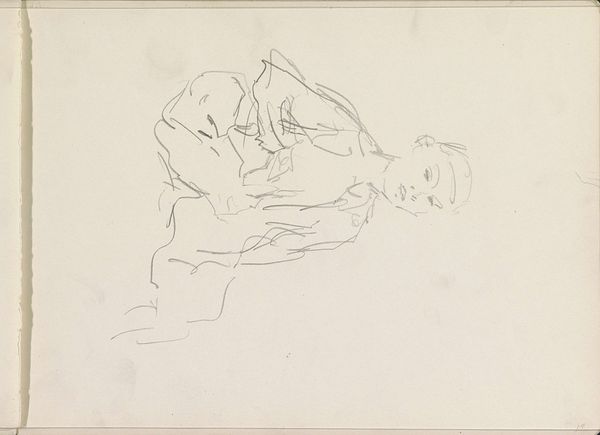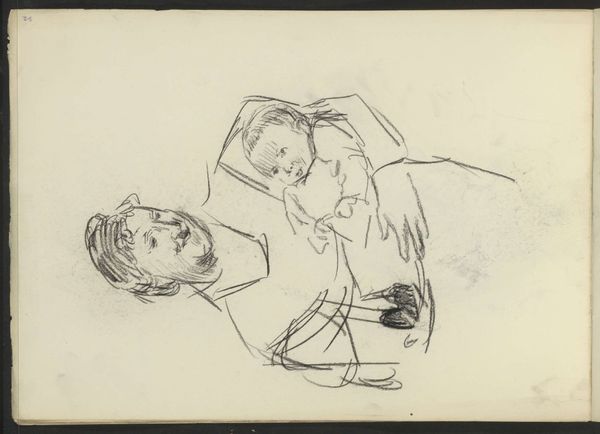
Dimensions: 13 1/4 x 8 15/16 in. (33.66 x 22.7 cm) (plate)17 1/2 x 12 1/16 in. (44.45 x 30.64 cm) (sheet)
Copyright: No Copyright - United States
Curator: This is Mary Cassatt’s "Louise Nursing Her Child," created around 1899. The artwork resides here at the Minneapolis Institute of Art and is rendered using drypoint and pencil. Editor: It has a softness to it, a quiet domesticity. The sketchy lines and muted tones give it a sense of intimacy, like a stolen moment. Curator: Cassatt was quite radical in her depiction of women and domestic scenes. Breaking from traditional male gaze representations, she presented female experiences through a decidedly feminist lens. Editor: Right. This isn’t some romanticized Madonna figure. We see a working mother, a real person engaged in the everyday labor of childcare. How does the use of drypoint impact our perception? Curator: It gives the image a delicate yet unfinished quality. Consider how Impressionism valued the ephemeral, the fleeting moment, but in this rendering, it can also represent how quickly childhood evolves, requiring constant engagement, time, and work. Editor: And the process of printmaking itself speaks to that labor, doesn’t it? The artist deliberately etched lines, worked with the copperplate, then repeated it, emphasizing the repeatable, and potentially endless nature of domestic work. Curator: Precisely. Furthermore, considering this work through a lens of class and access to material production can make us consider who and who might not be rendered or cared for by their parents at all during this time. Editor: It challenges traditional hierarchies that often dismiss craft as less valuable. The lines, almost like pencil strokes, reveal the artist's hand and remind us of the physical effort involved. Cassatt highlights that physicality often absent in depictions of motherhood. Curator: Yes, by depicting everyday acts and investing them with artistic merit, she was elevating them as valid subjects of art and commentary, while prompting viewers to re-evaluate the work inherent in caregiving. Editor: I agree. Thinking about process reveals Cassatt’s intent not to idealize but to humanize. To ground us in a material reality of both artmaking and caregiving. Curator: By exploring this image from both an intersectional social history and the material labor we may reconsider both artmaking and the home spaces around us as spaces of work and love. Editor: It makes me appreciate the complex process, time, and craft that went into producing a single image that may, on the surface, appear to be so effortless.
Comments
No comments
Be the first to comment and join the conversation on the ultimate creative platform.
